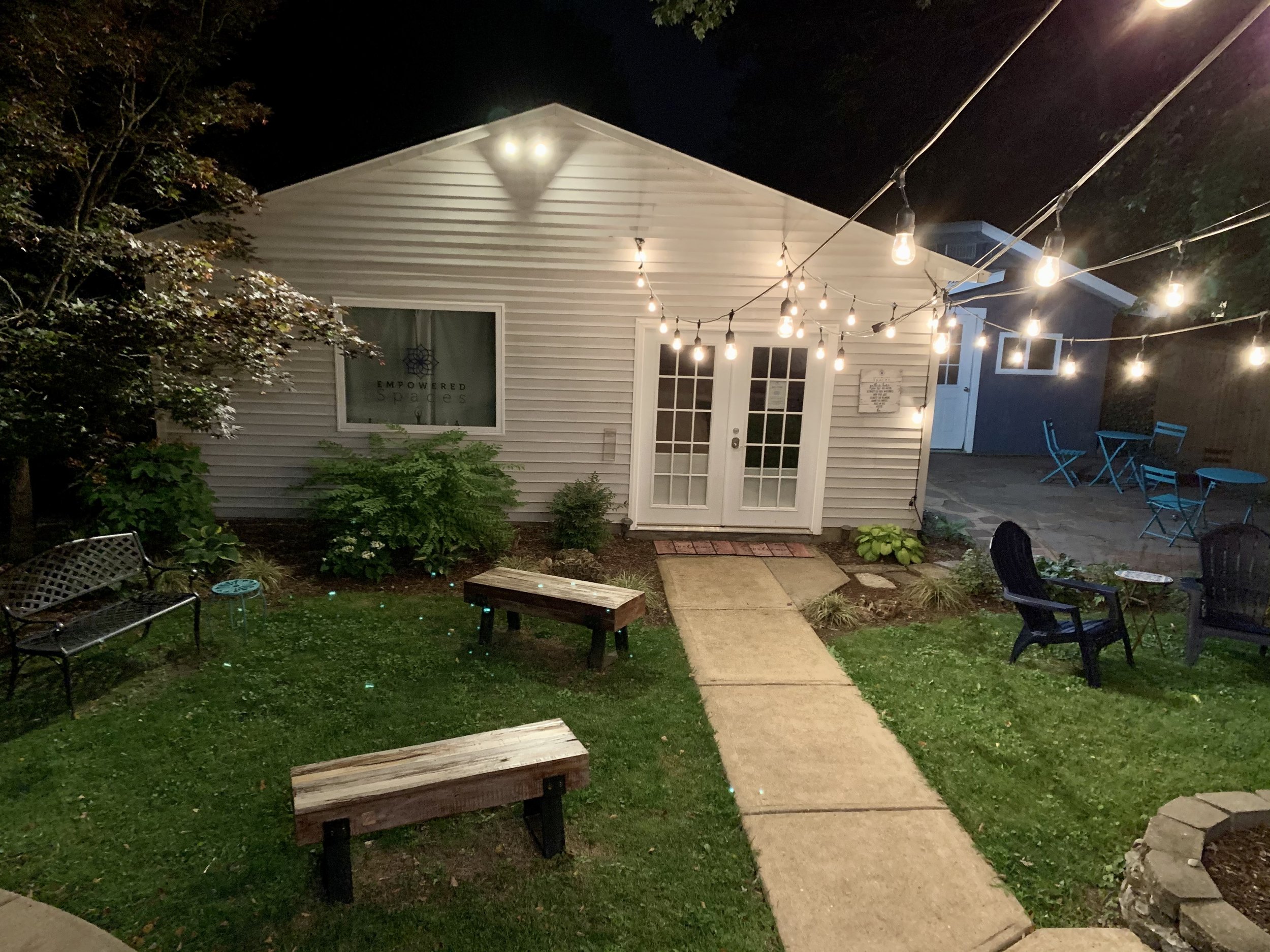
You deserve to define your own path towards healing.
We are committed to providing holistic, comprehensive, individualized, trauma-informed approaches to healing and well-being. One approach that we use in therapy is called Somatic Experiencing, or SE. This page will share a general overview of SE and how it might support you on your healing journey.
Somatic Experiencing
“Trauma is not what happens to us, but what we hold inside in the absence of an empathetic witness.”
― Peter A. Levine
Image by Brea Youngblood
Healing at the level of body, mind, emotions, and spirit.
Image: Brea Youngblood
What is Somatic Experiencing?
Somatic Experiencing (SE) is a holistic, gentle, somatic therapy approach to healing created by Dr. Peter Levine. SE is body-based, rooted in neurobiology, and is a pathway for resolving unhealed stress and trauma. This non-pathologizing and empowering modality supports you to tap into your own innate capacity to heal and return to your wholeness and aliveness.
When someone experiences an adverse, overwhelming or threatening life event, the body can get “stuck” in protective patterns of fight, flight, freeze or shutdown. SE is an experiential process that offers a framework to assess where someone is “stuck”, and then works to complete the protective response and metabolize these physiological states that are the root of trauma symptoms - including symptoms such as anxiety, hypervigilience, depression, fatigue, chronic pain.
At the foundation of Somatic Experiencing is the belief that every individual has an innate capacity to heal.
SE aims to resolve trauma, restore physiological and emotional balance, cultivate resiliency, improve well-being, and reclaim your aliveness.

Somatic Experiencing addresses the symptoms of trauma at their root - at the level of the nervous system.
Meet Our Practitioners Trained in Somatic Experiencing
-

Kelly Caul, MSW, LCSW, SEP (she/her)
-

Sarika Stone Talve-Goodman, LCSW, MS in Narrative Medicine, PhD in Literature (she/her)
-

Katie Kirby, MSW, LCSW (she/her)
Psychotherapist
Somatic Experiencing (Intermed ateYear)
-

Rachel Tate, LMT (they/she)
Massage Therapist
Movement Guide
Somatic Experiencing (Intermediate Year)
Trauma is anything that overwhelms your capacity to cope and respond - and leaves you feeling helpless, hopeless, and out of control.
Trauma can result from something that happens too soon, too fast, or too much - OR too little for too long.
How does Somatic Experiencing Work?
Trauma is not the event or what happened to you. Trauma is what happens within your nervous system in response to what happened to you.
Trauma is the lived experience of the nervous system’s response to threat, overwhelm, and not being safe.
The process of SE starts with building awareness of how stress and trauma are living in your body by showing you how to learn the language of your own unique nervous system.
This body-oriented approach listens to the story of the nervous system, just as much as listening to the cognitive narrative.
Through this process of befriending your body, you also build your capacity to be with sensations and emotions - even the most challenging ones, as you reconnect to the felt-sense of your body.
As you bring attention and curiosity to the trauma responses “stuck” in the body, SE therapy supports you to metabolize the unresolved survival energies that are still living within the body (in your tissues, cells, fascia, muscle patterns, organs) as a result of the incomplete stress response.
This process is based on the fact that our bodies, like animals in the wild, are biologically wired to know exactly what do to heal when provided with the necessary conditions.
Somatic Experiencing supports you in accessing within your body the wisdom needed to heal and resolve trauma.
Benefits of Somatic Experiencing
Self-Awareness - develop a deep understanding of the language of your unique nervous system
Self-Acceptance - view your ‘symptoms’ as natural reactions to stress, trauma, and the abnormal circumstances you are living in - rather than a pathologizing diagnosis
Self-Understanding - come to understand why you feel the way you feel, think the way you think, behave the way you behave
Self-Compassion - learn how patterns that you struggle with have developed as protective strategies, and how to relate with self-compassion
Mindfulness - learn to be more mindful both to your inner world and outer world so that you can be more present throughout your day
Develop Self-Nurturing Practices - learn practices to build your capacity to be present with overwhelming emotions and uncomfortable sensations
Trauma Healing and Resolution - resolve trauma at the level of your nervous system, healing at the biological level - from the inside out
Empowerment - as you deepen your connection to Self, you are able to live a more authentic life
Reclaim Your Personal Power - build confidence and show up in your power
Befriend Your Inner World - re/learn to attune to and befriend your thoughts, emotions, and sensations with acceptance and compassion
Restore Inner Harmony - heal your internal wounds and restore balance to your inner world
Embodiment - reconnect with your body and create an inner sense of safety
Symptoms of unresolved trauma can look like
anxiety, panic, stress, overwhelming emotions
self-harm, suicidal thoughts
hypervigilance
depression and numbness
chronic pain or unexplained somatic symptoms
physical health issues
sleep disorders
chronic tension
addictions
gastrointestinal disorders
sexual dysfunctions
migraines
dissociation
lack of connection to self
attachment issues
body image issues and eating disorders
bullying, oppression, racism, and discrimination
issues that haven’t resolved after years of therapy
Understanding the Neuroscience
Dr. Peter Levine developed SE after observing animals in the wild. He discovered that animals in the wild rarely struggled with trauma symptoms - despite all of the events they lived through.
When a wild animal escapes after being chased by a predator, it instinctually knows how to shake off the stress of the event and go about it’s day.
He also observed events of animals who were not able to escape despite the instinct to flee, and when captured the animal freezes - falling immobile to the ground “as if” it were dead. This freeze state allows the animal to avoid pain if killed, and it also gives the animal more time to potentially escape if not killed right away by the predator.
As a human being, you too have a primitive part of your brain that is responsible for all of the automatic functions in your body (breathing, heart rate, digestion, blood pressure, etc.), in addition to being responsible for your survival responses - which happens below your conscious awareness.
You also have a prefrontal cortex - responsible for conscious brain functions of emotions and intellectual responses. These conscious responses often interfere with the wisdom of the body and can get in the way of these instinctual processes.
Trauma is in the Freeze
Once your survival response of fight or flight is activated it needs to come to completion before your nervous system can return to a state of balance and rest.
When you are unable to fight or flee (complete the survival response), your nervous system will move into the freeze state.
In this immobilized, freeze response, you might look calm on the outside - but internally it is like having the gas pedal and the break pressed at the same time.
All of this is usually happening below conscious awareness, and is requiring significant amounts of metabolic energy.
This is what creates the symptoms of trauma. Trauma symptoms develop when you can’t complete the process of moving through the freeze response and discharging the survival energies.
Since the survival energies come from the primitive part of your brain, symptoms of trauma are most often related to the functions regulated by that part of our brain: breathing, heart rate and blood pressure, digestion, sleep, sex.
This primitive part of our brain cannot be accessed through language.
This is why including the body in trauma healing is essential - the language of the primitive brain is sensation.
Dr. Peter Levine talks about the effects of trauma on the nervous system, and his philosophy of treating trauma.
Dr. Peter Levine talks about what led him to the creation of Somatic Experiencing.










